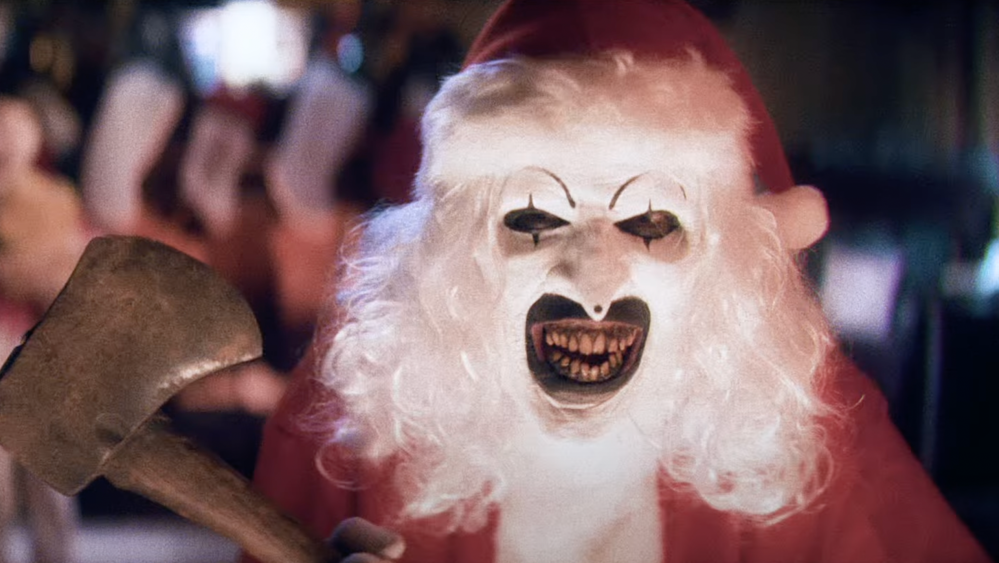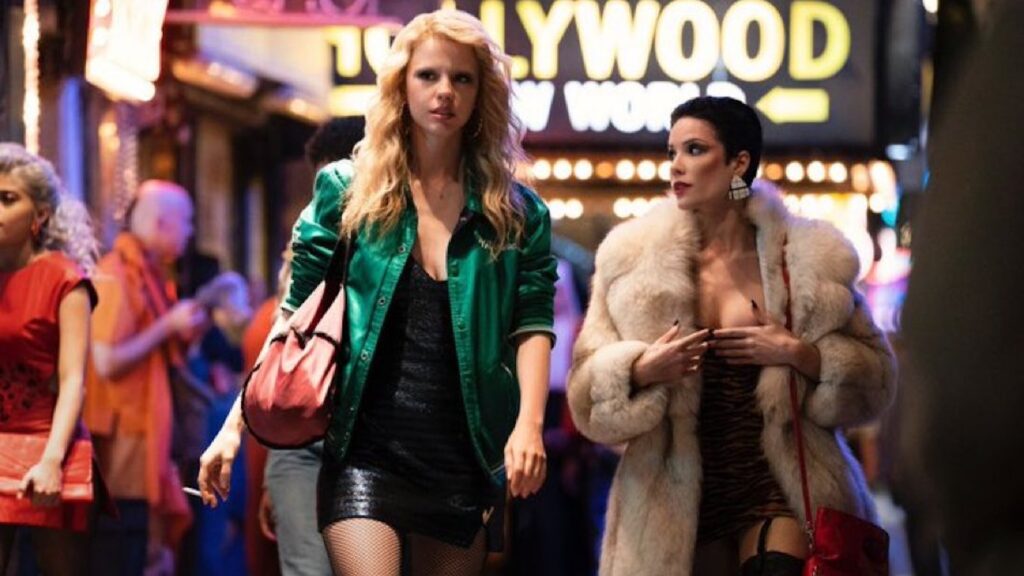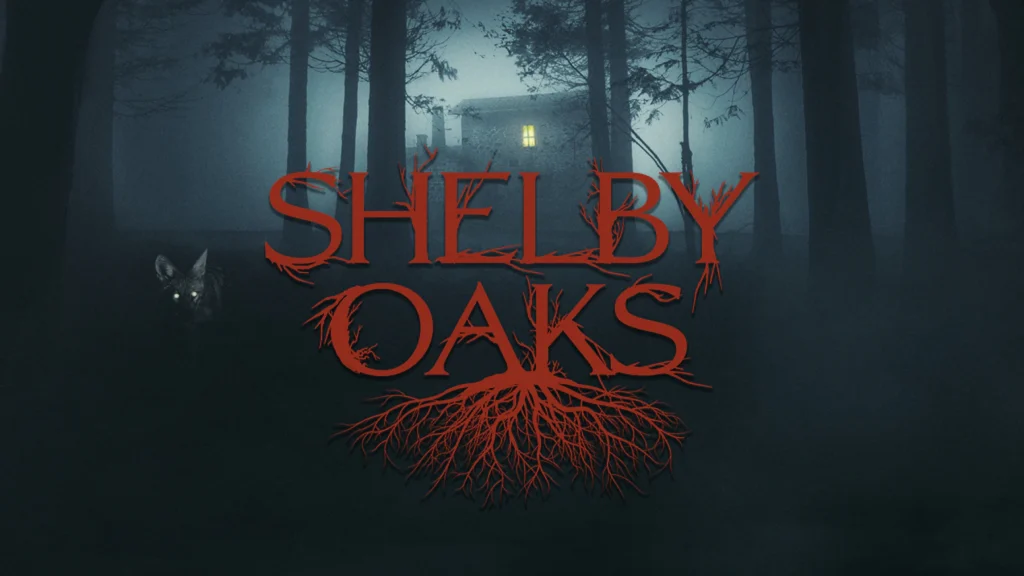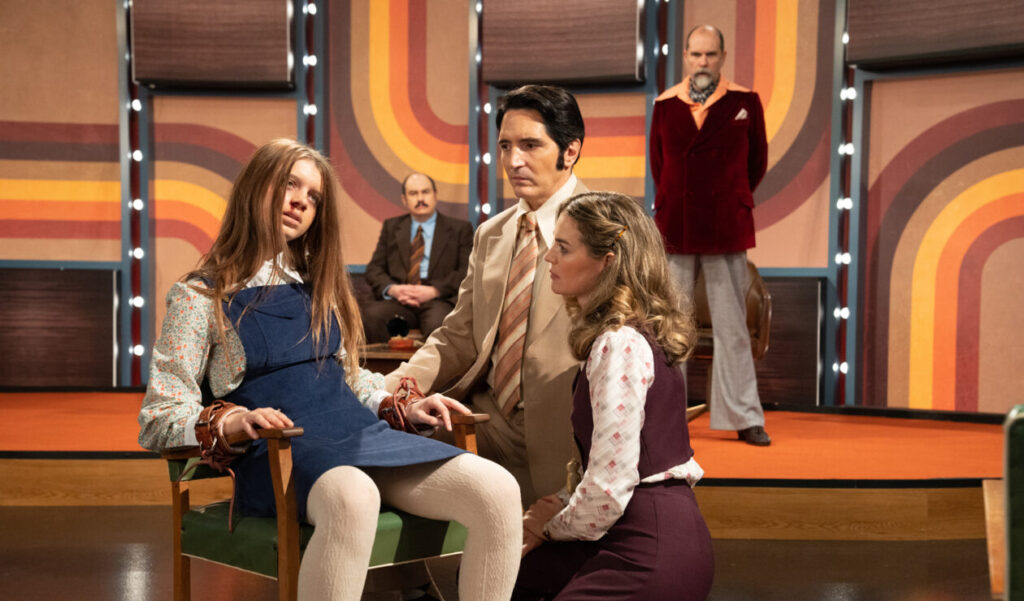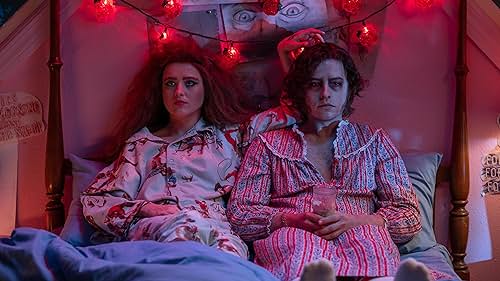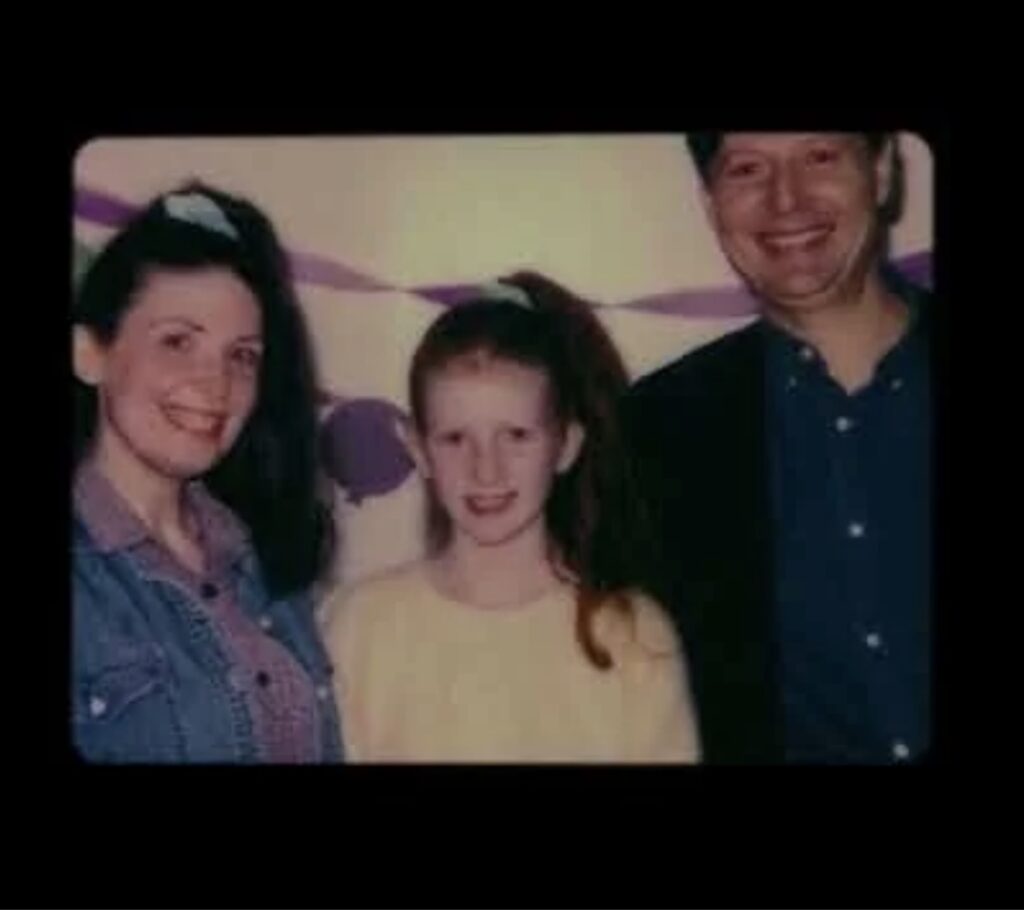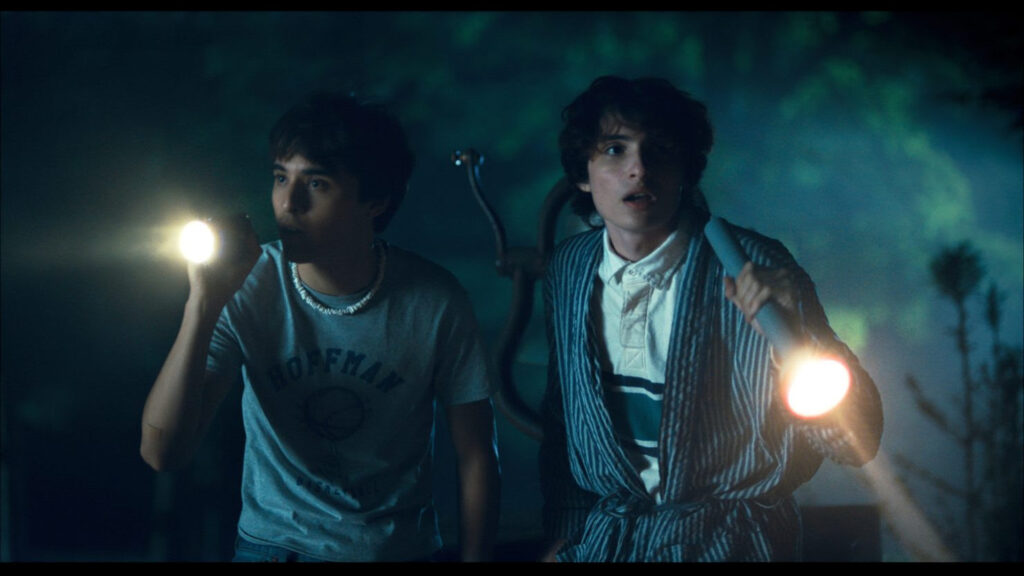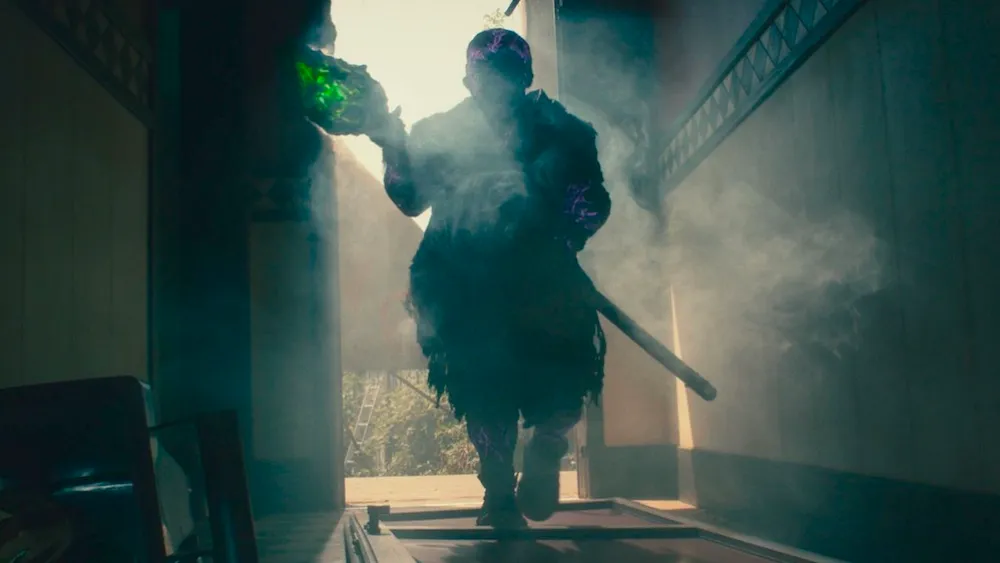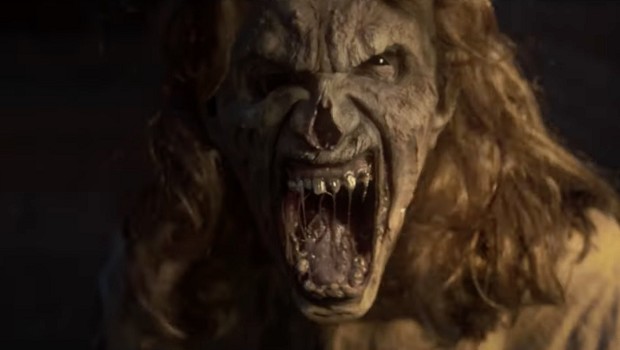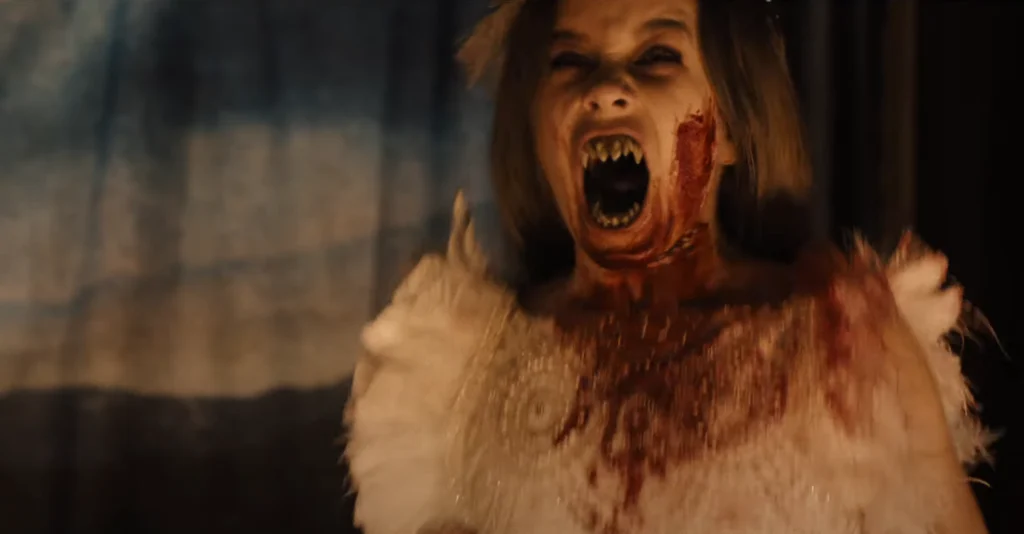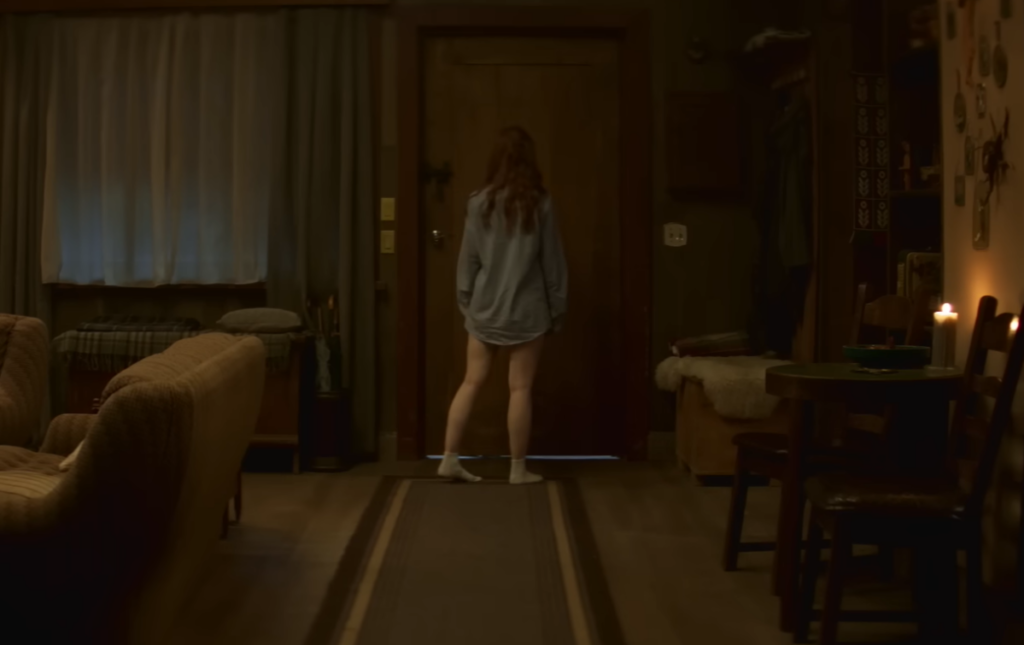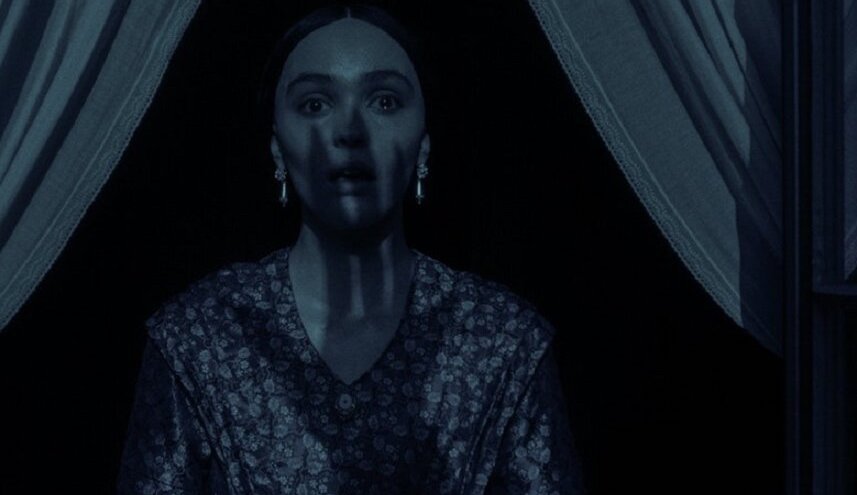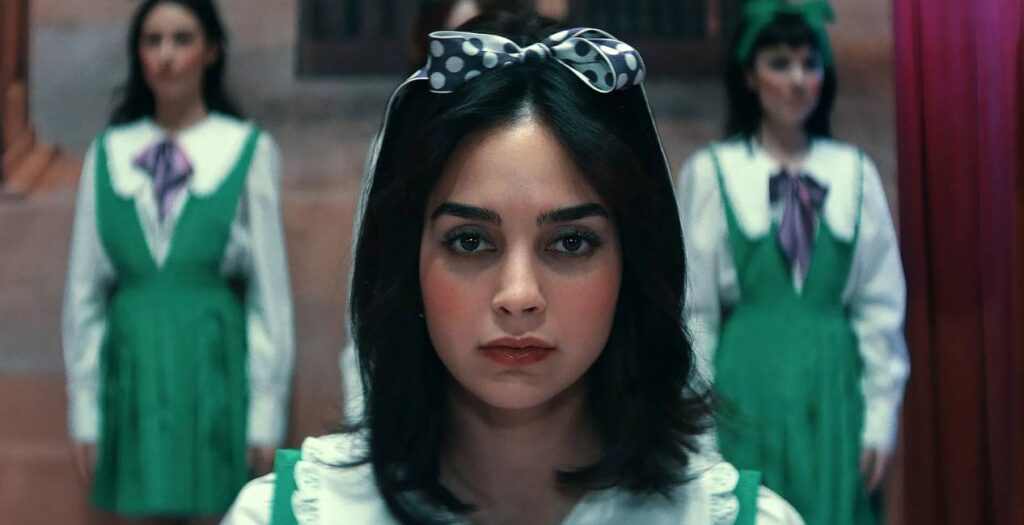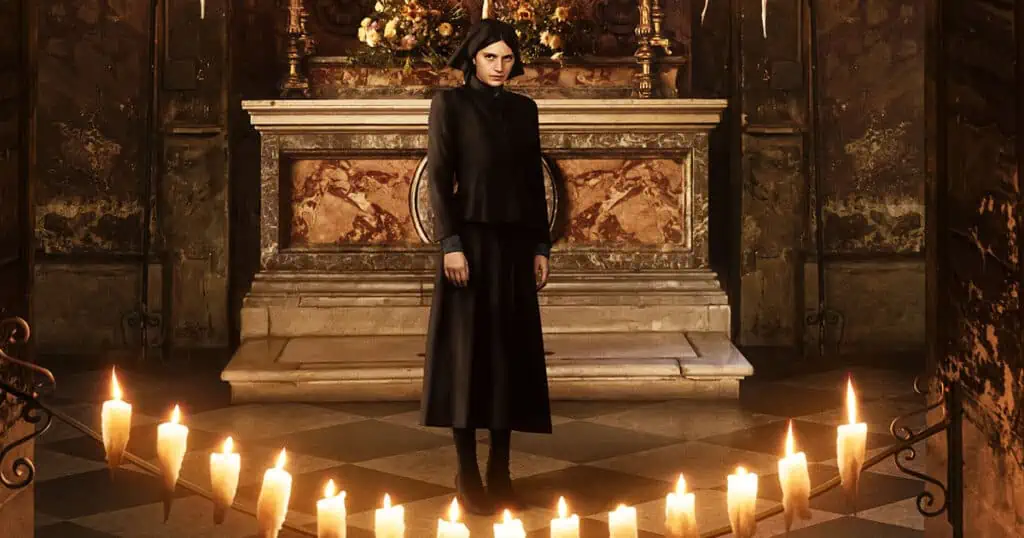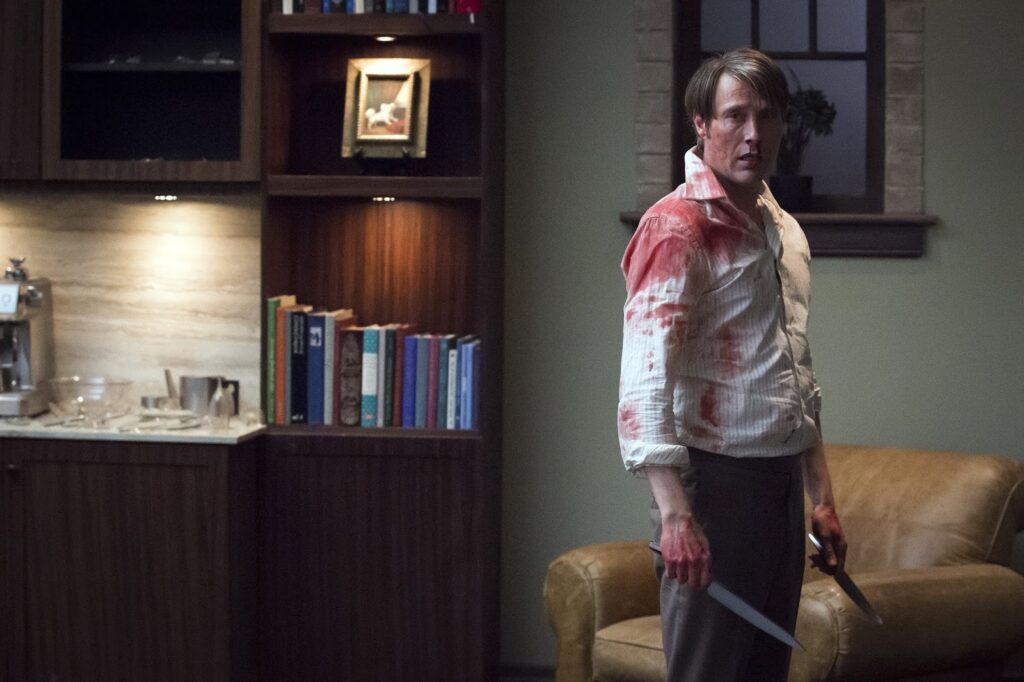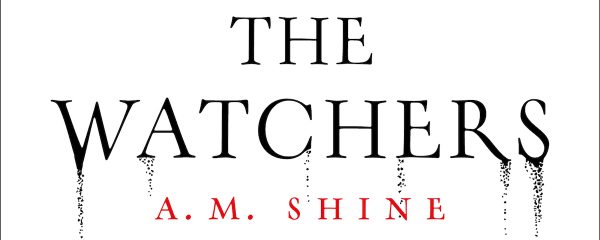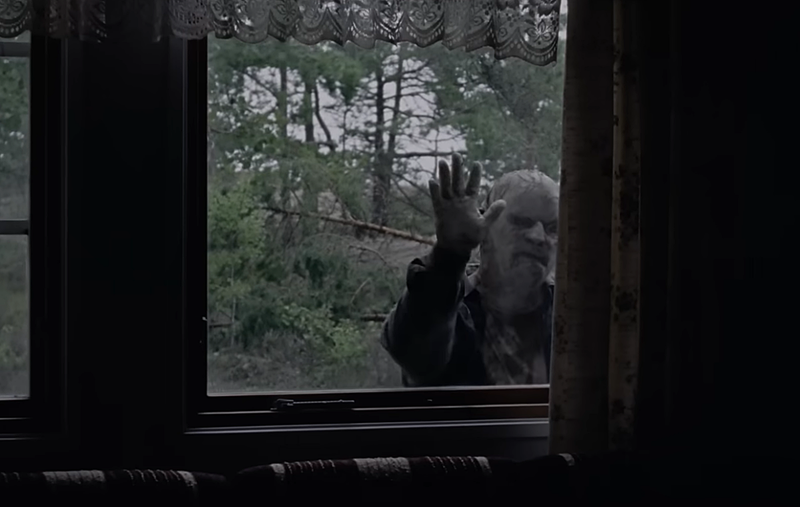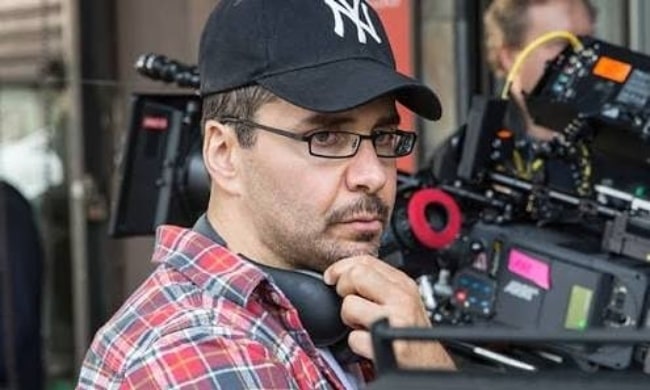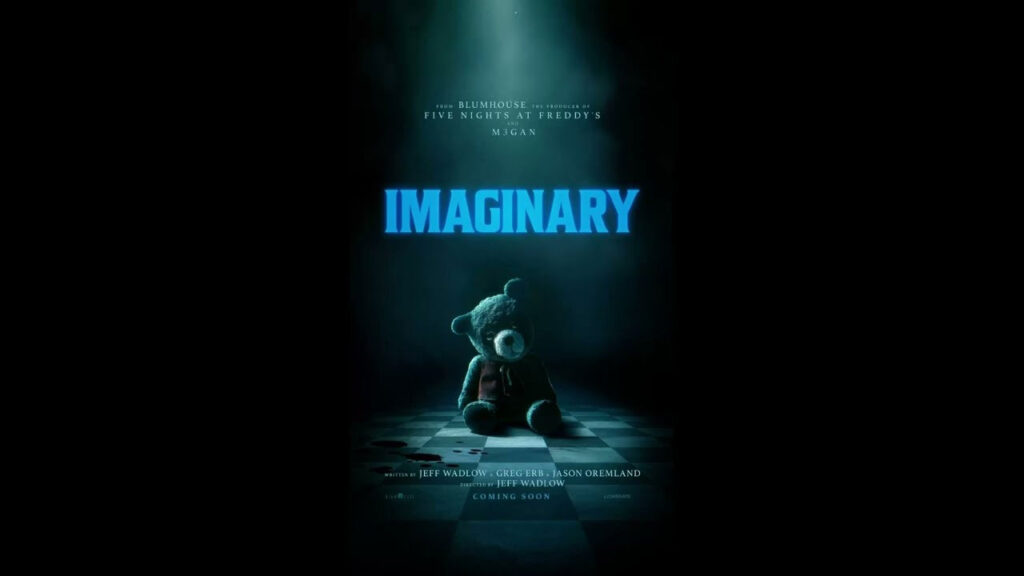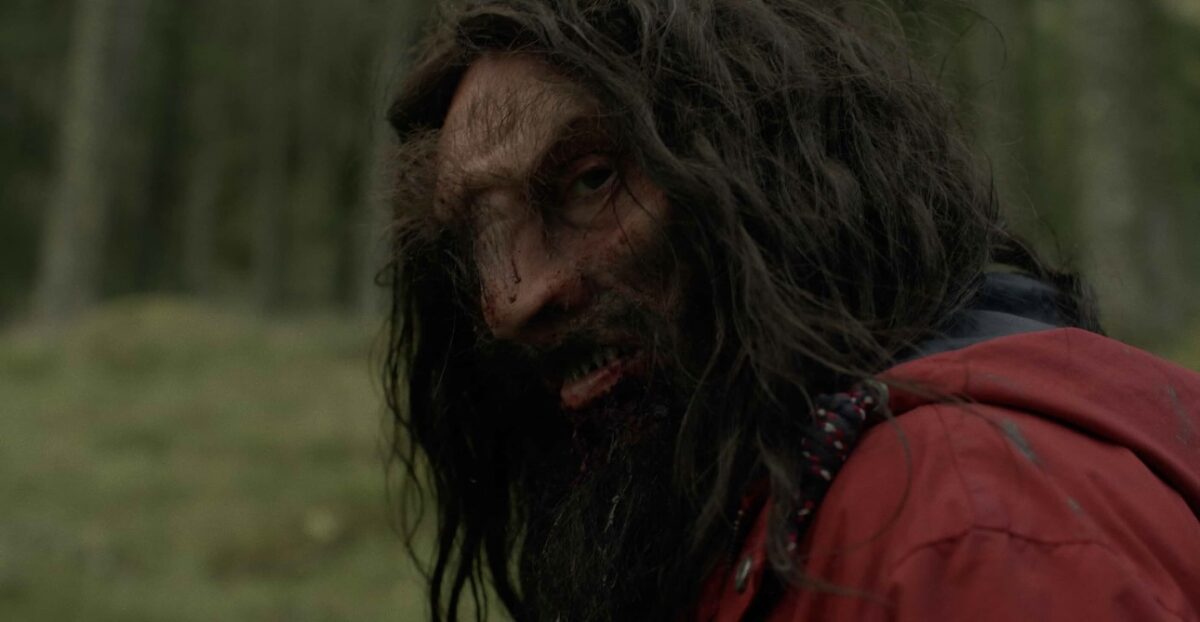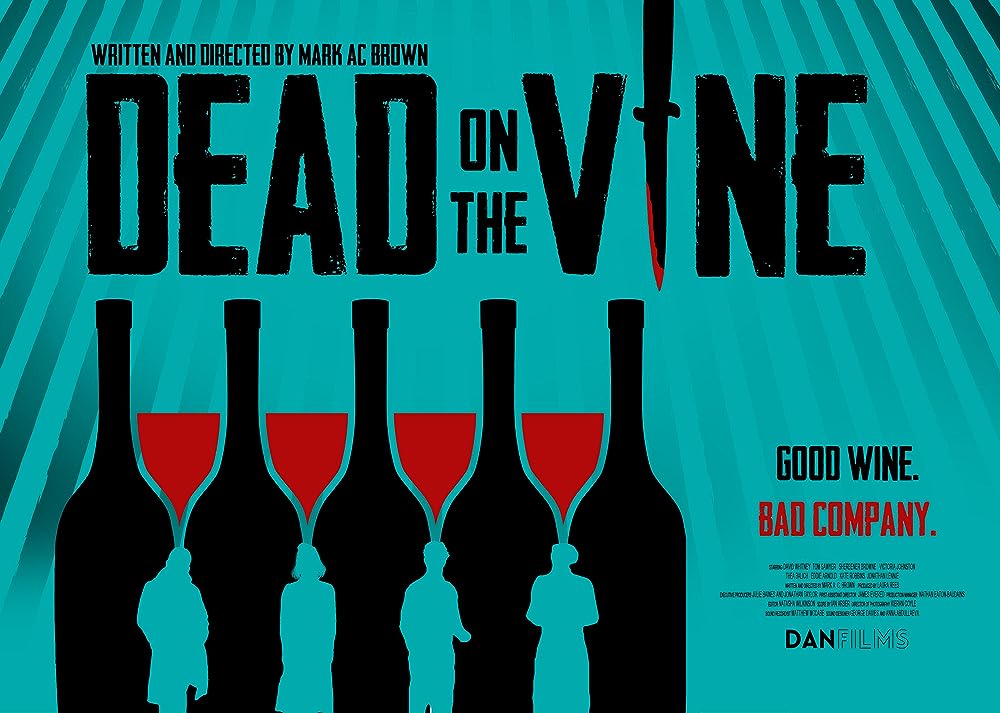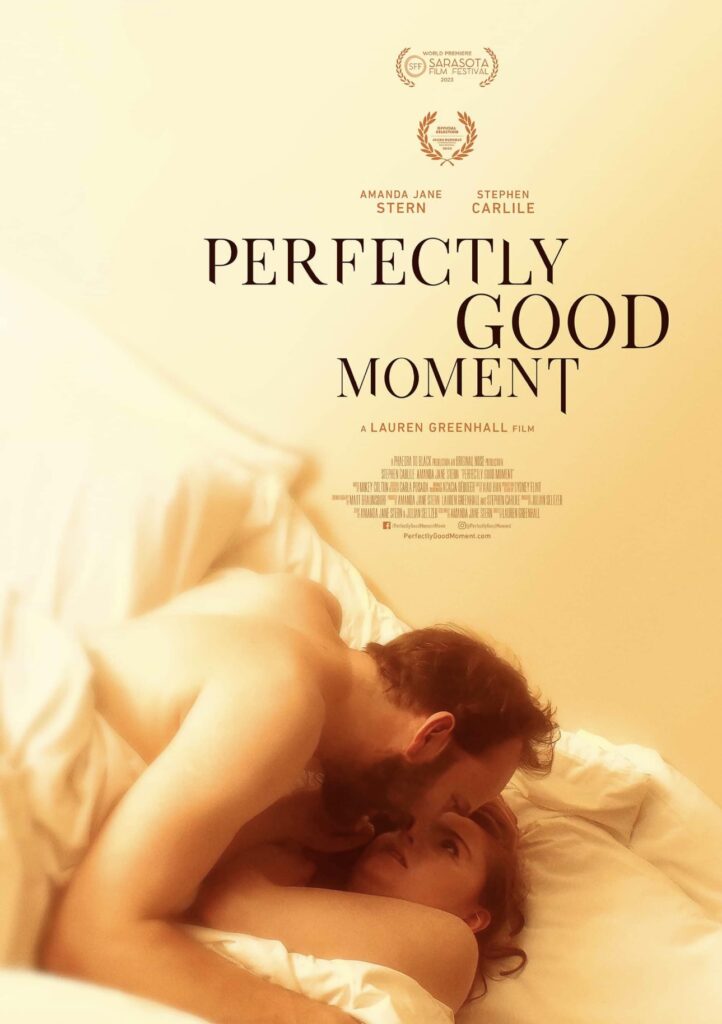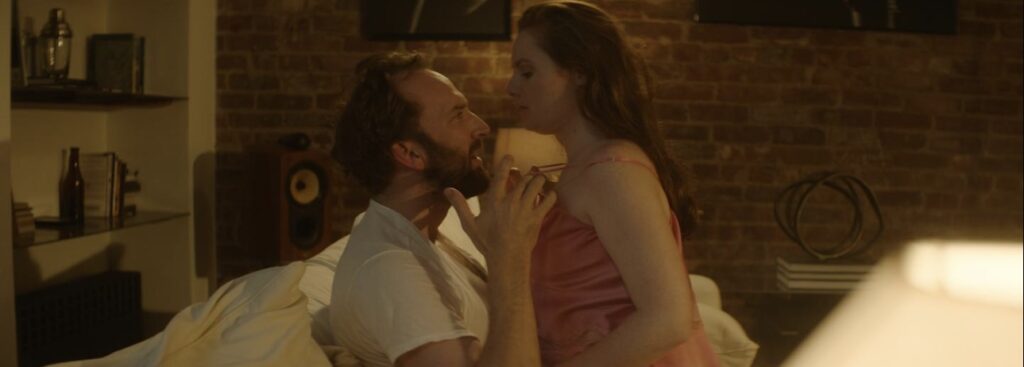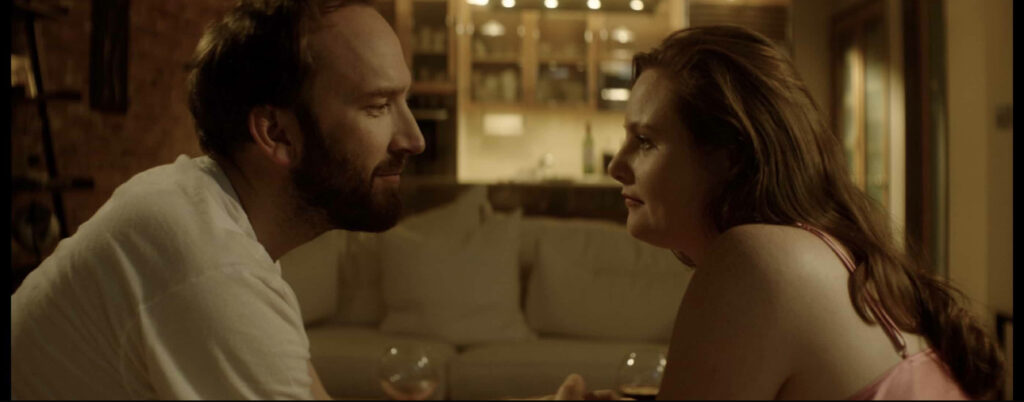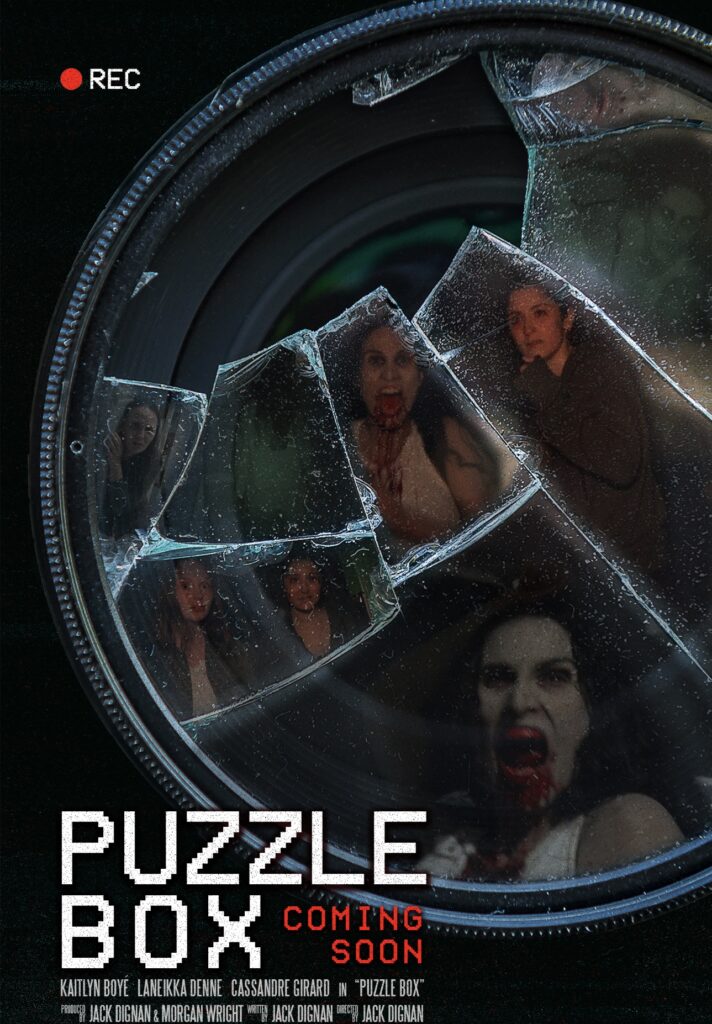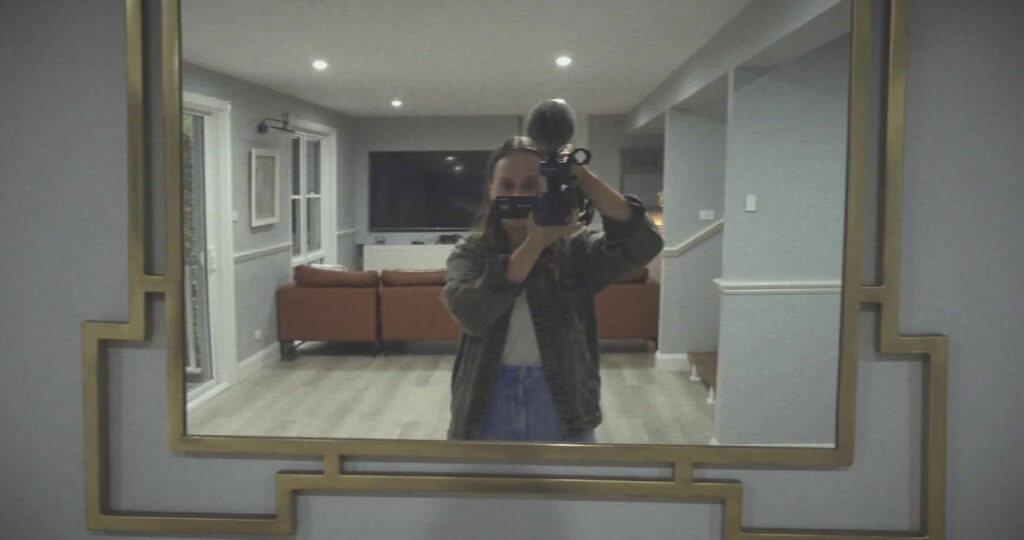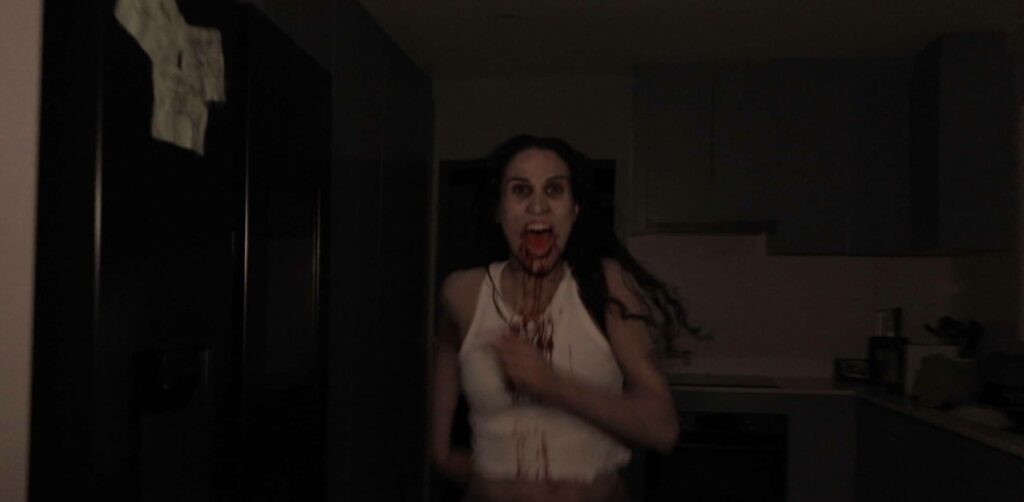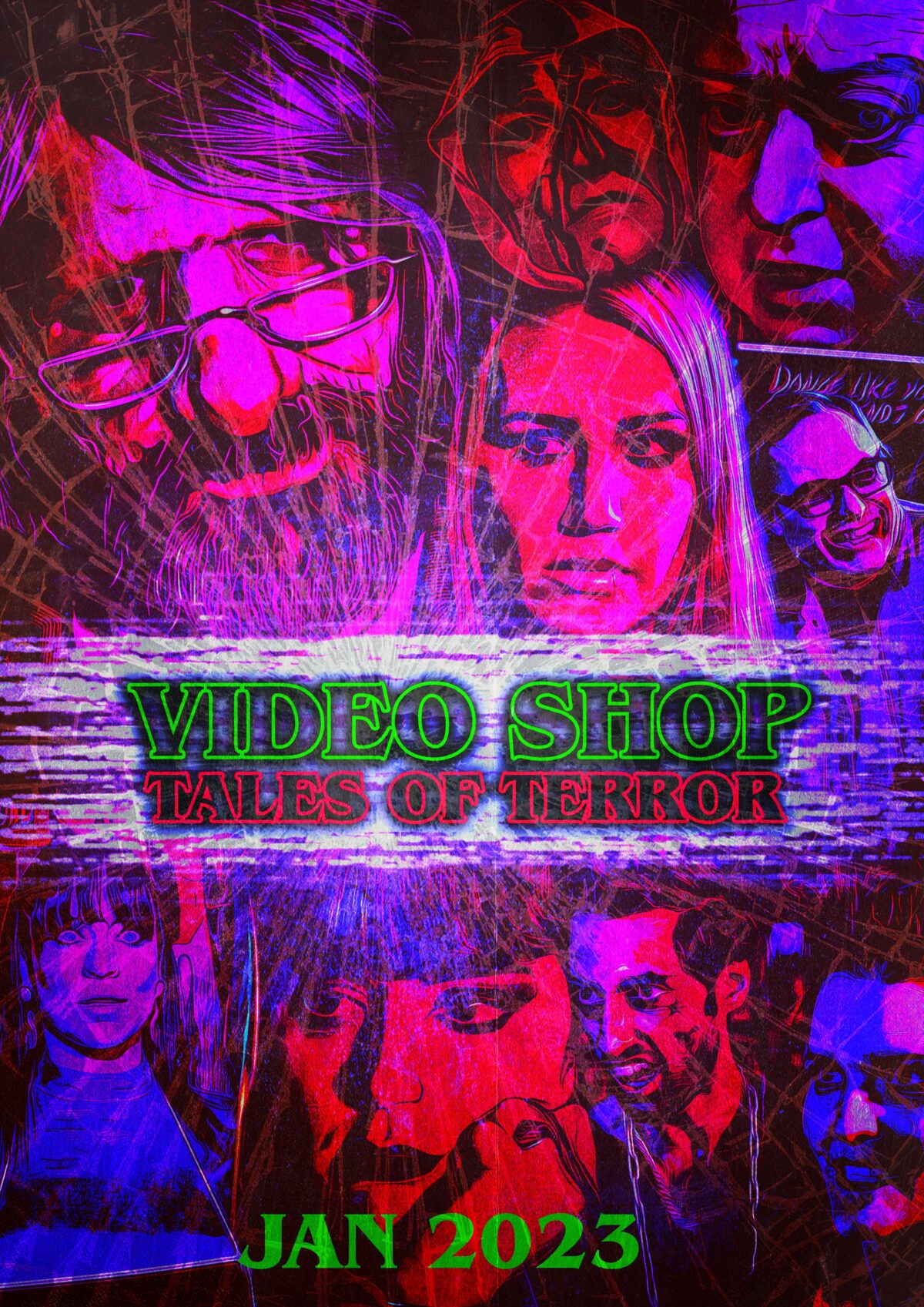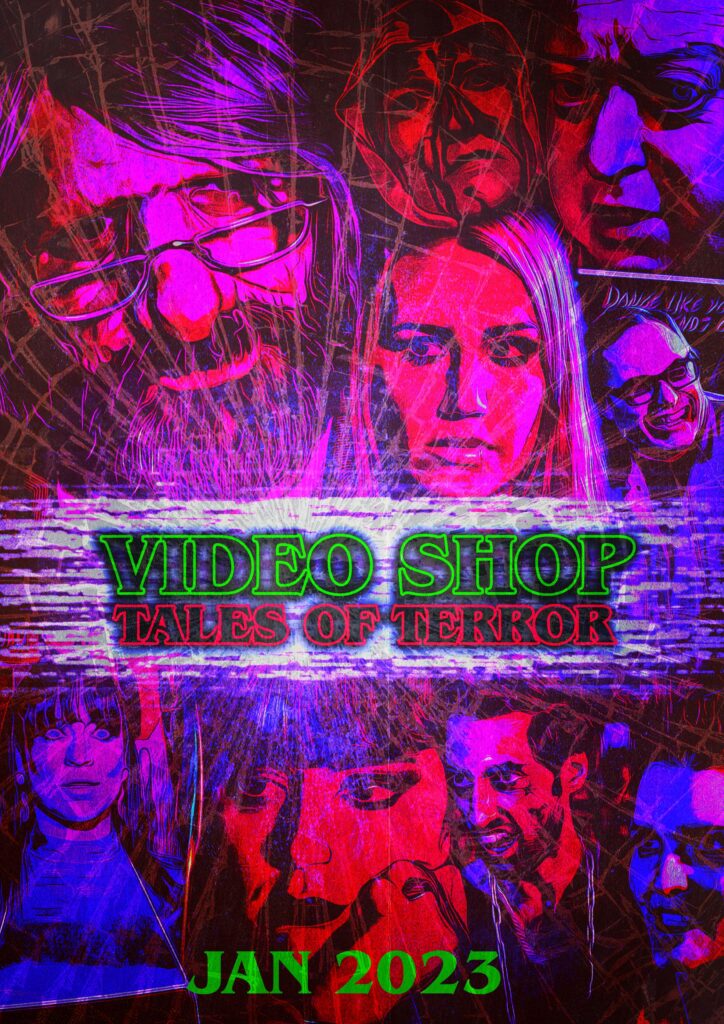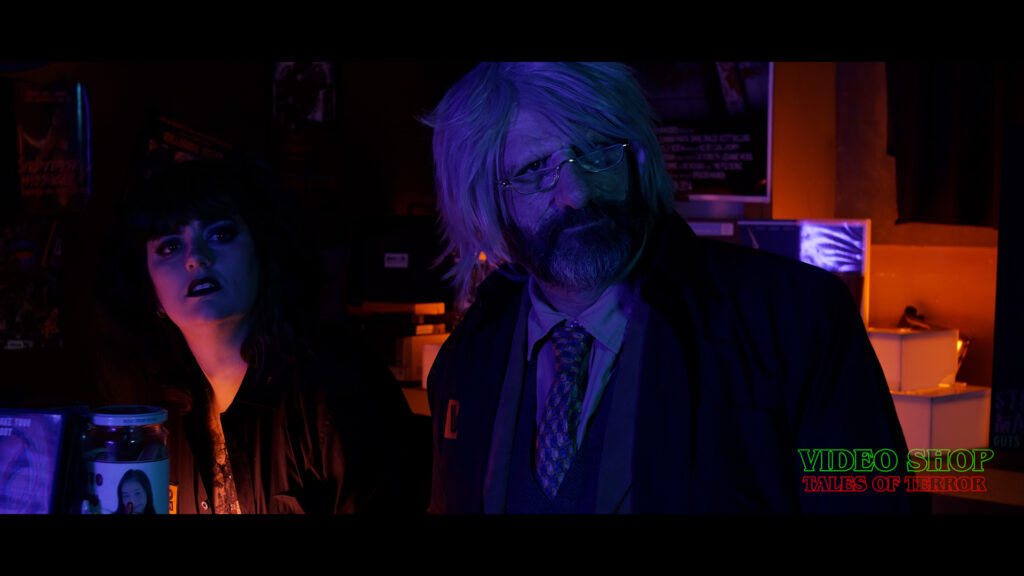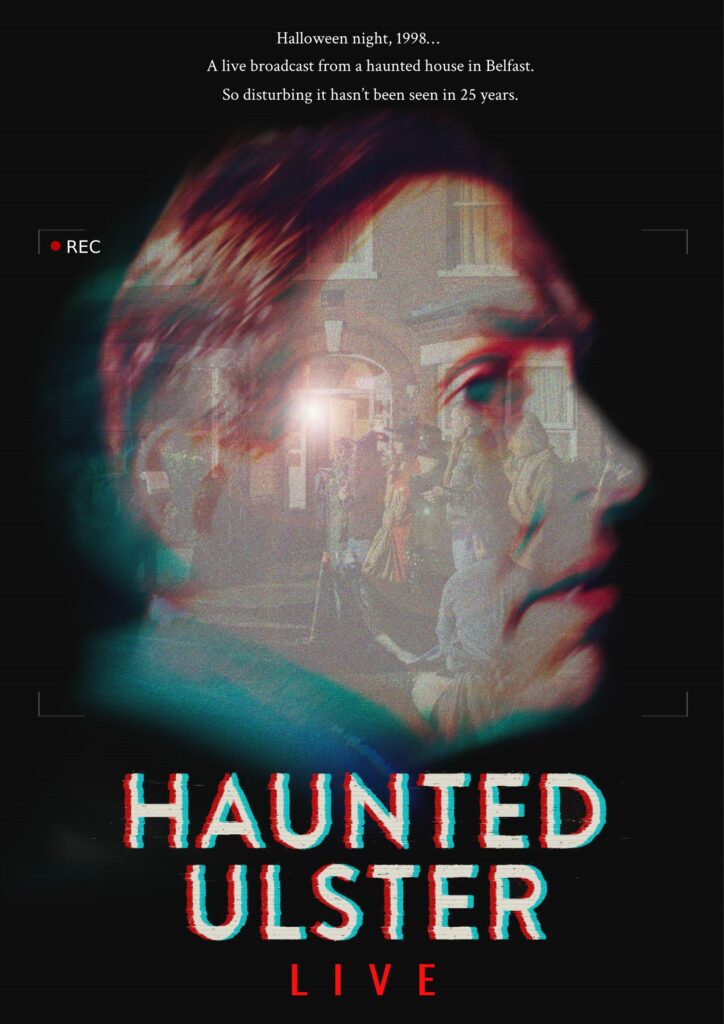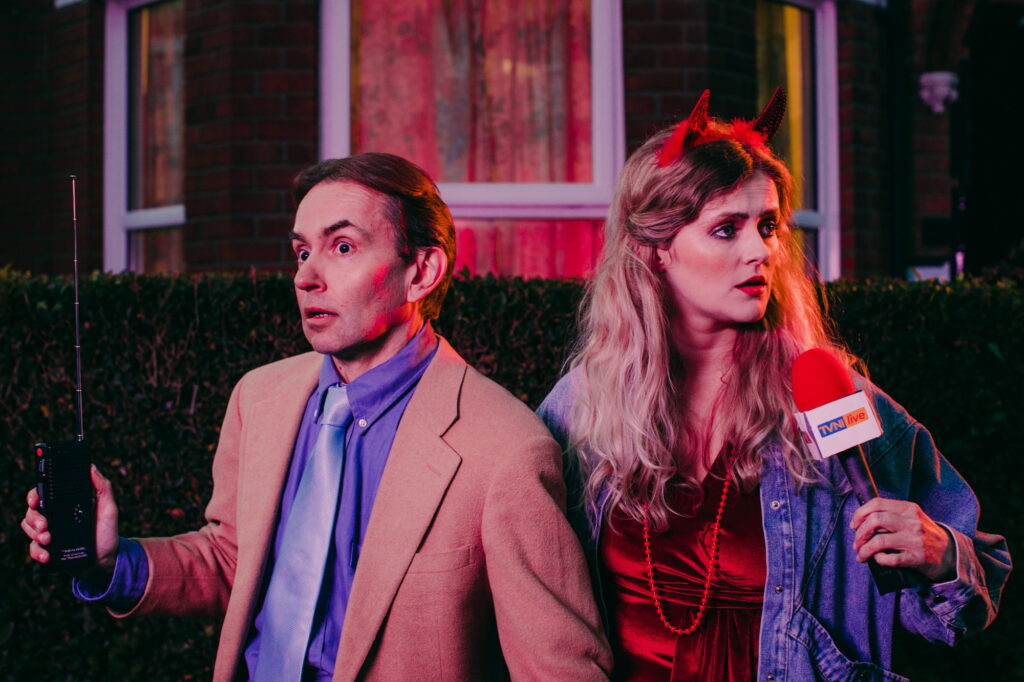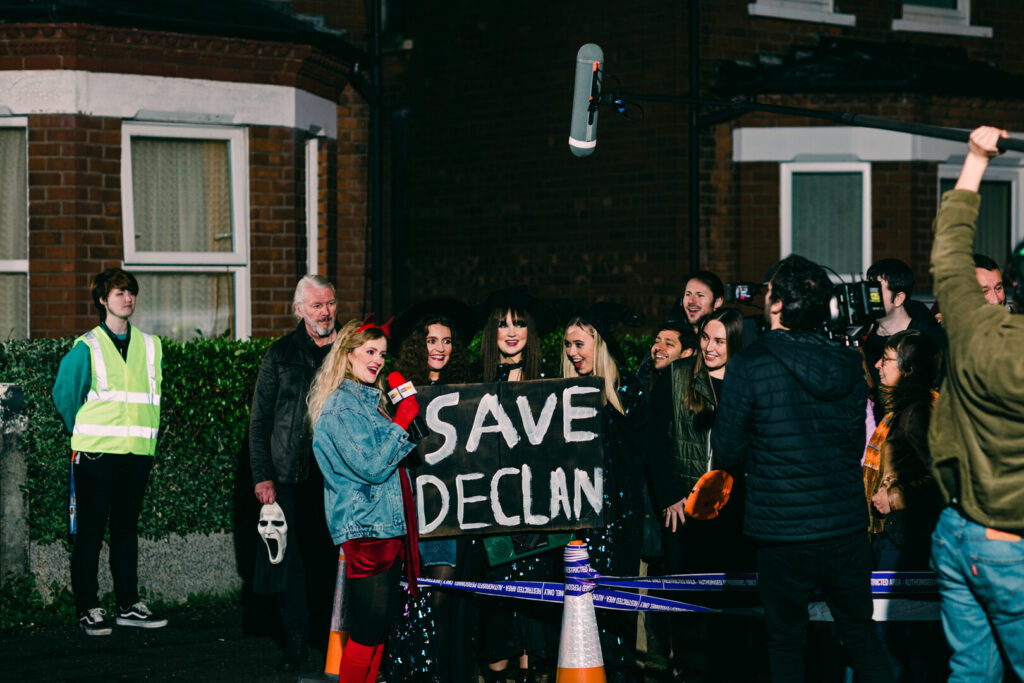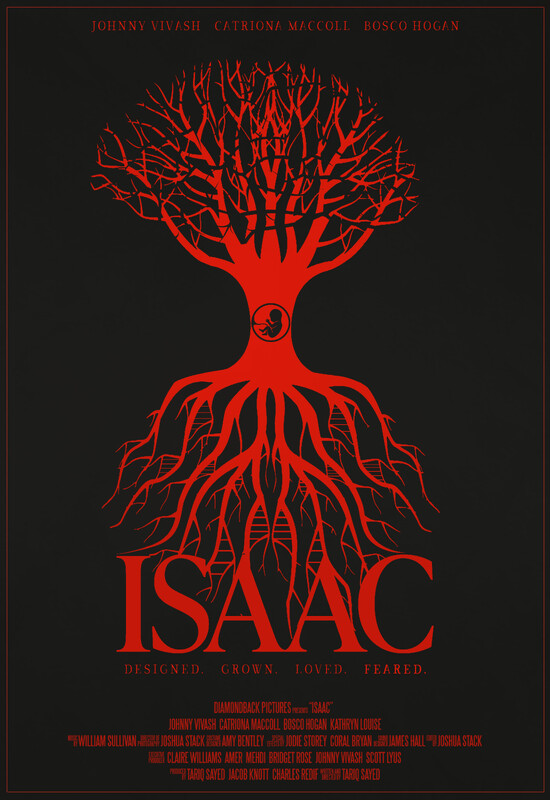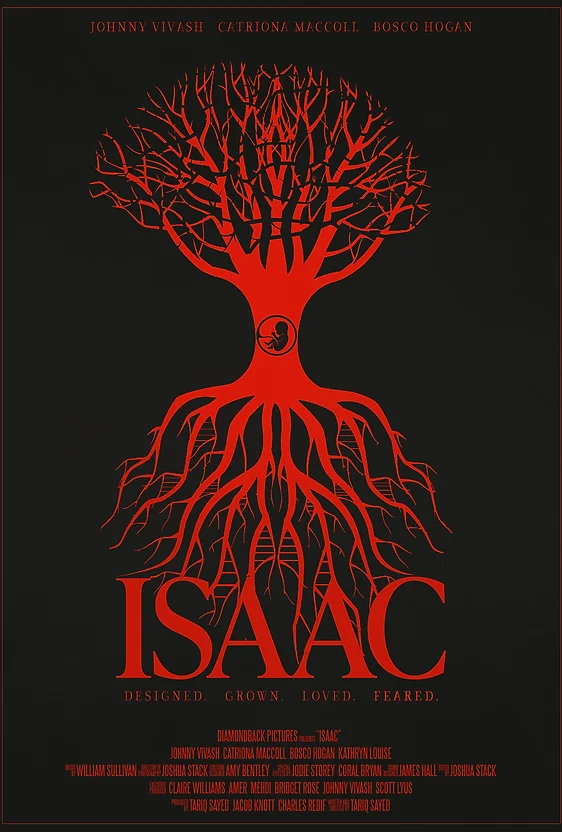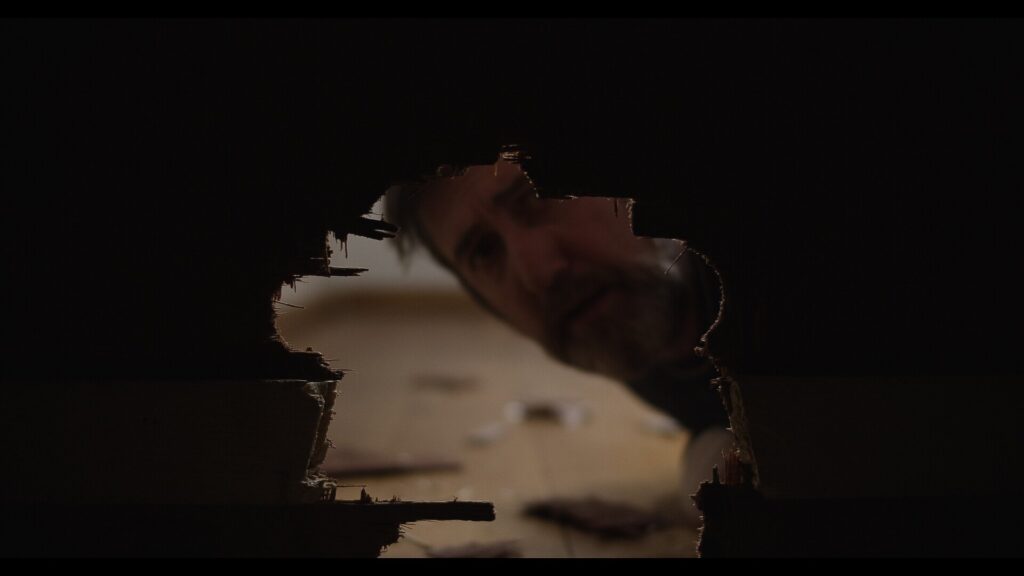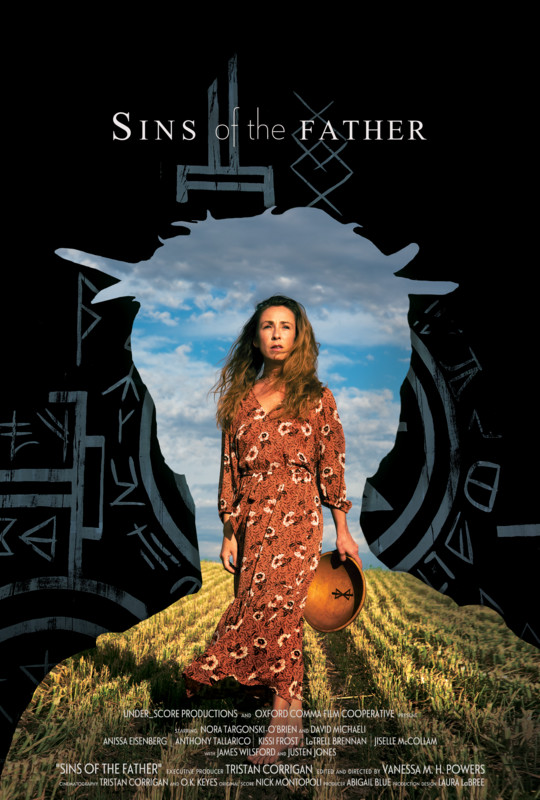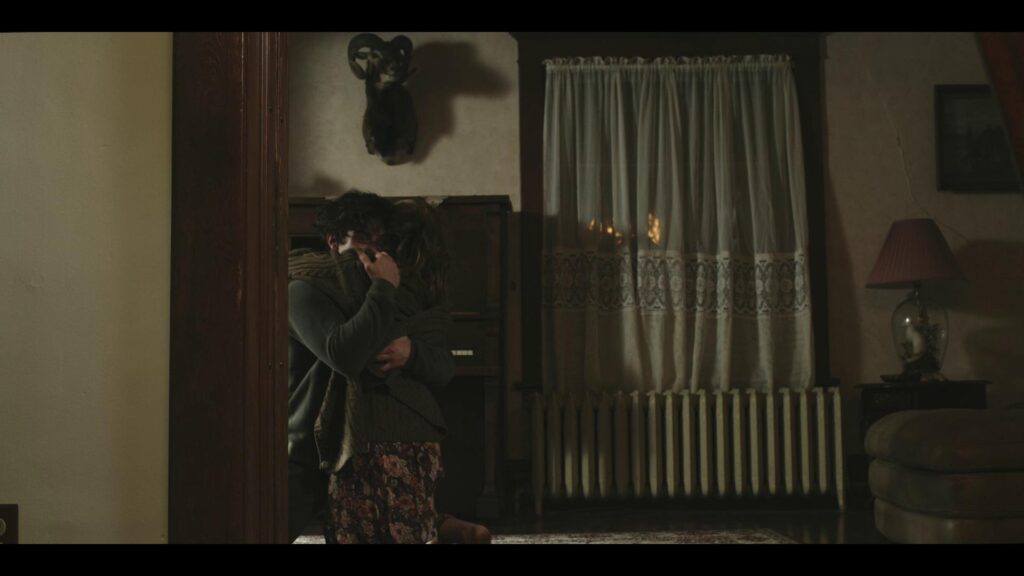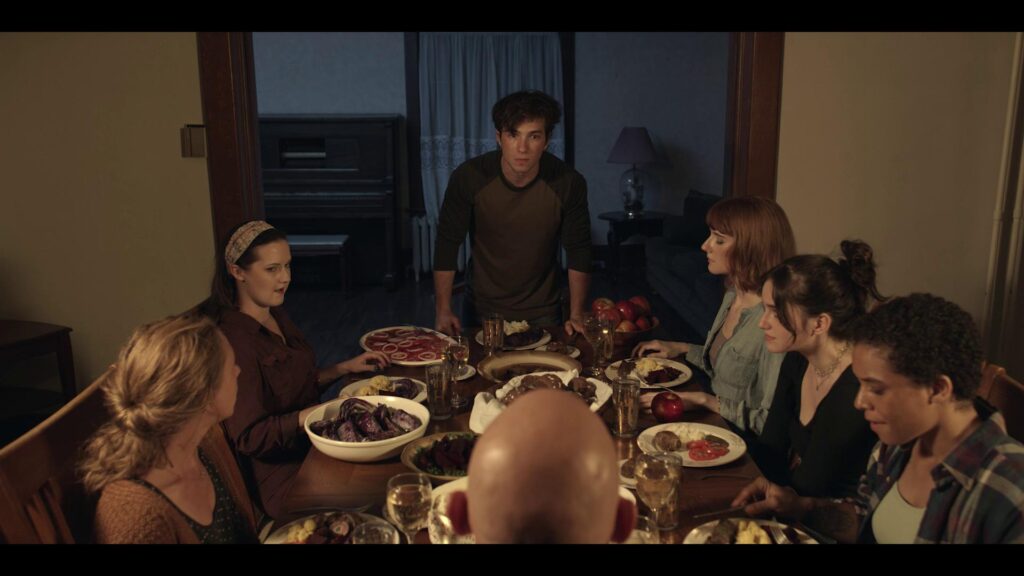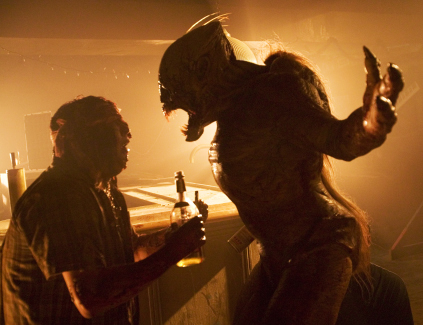
1- Thing – The Thing (John Carpenter, 1982)
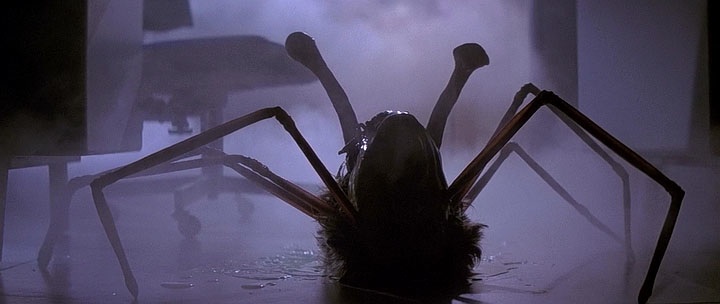
‘Thing’: the detailed, unearthly, alien-like conundrum of a creature is not simply one of the horror genre’s most iconic beings, but one of cinema’s itself. Instantly recognisable and synonymous with John Carpenter’s grandiose auteurism is this hybrid, shapeshifting brute whose physical capacities include mutating into an array of phobia-inducing monsters including mutated huskies and gargantuan arachnids with talking heads (props to the Kafkaesque composition). The Thing’s stellar reputation is largely owed to special effects artist Rob Bottin who primarily conjured the horrid creatures throughout the entire film. It can confidently be stated that Bottin’s originality and sheer ingenuity have created the ultimate blueprint for movie monsters.
2- The Monsters – Feast (John Gulager, 2005)

Whilst the Feast trilogy establishes that these apex predators are indeed deadly carnivores with an appetite for pure destruction to accompany their fleshy cravings, what is left undecided is their exact alien-like origin. However, forgoing whether they are innate earthly dwellers or not, what is noteworthy is how savage, beastly and ultimately gnarly these cosmic creatures truly are. Feast’s resident critters are responsible for some extremely gruesome antics such as eye gouging, head smashing, throat slashing and plenty of glimpses of archetypal sci-fi green goo and generous close-up shots of an array of slimy fluids. Further tearing into the response system of the viewer is the creature’s cruel, grotesquely evil actions that include assaulting their female victims in the most violent of manners. Feast certainly dares to shock the audience in every way possible.
3- The classic green Martian – Signs (M. Night Shyamalan, 2002)
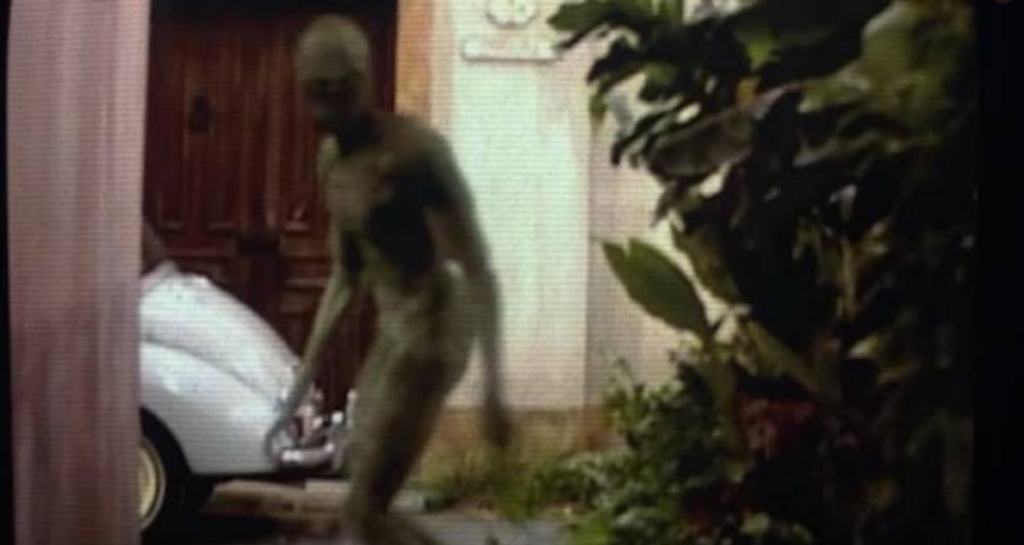
One particular scene in M. Night Shyamalan’s Signs has garnered quite a reputation over the years, and for a very good reason as this single moment manages to conjure such a spine-tingling, nail-biting, pure burst of alarming fright. Of course, the scene in question is the ‘birthday party scene’. Supporting lead, Merrill (Joaquin Phoenix) is shown watching the news, trying to seek out the strange alien happenings going on in the world. However, during the broadcast, a clip is aired of a birthday party that is suddenly interrupted by a gangly green alien striding across the screen. It’s a moment of such simplicity and plainness that somehow manages to reach out from the fictional world of Signs and physically affect the viewer. The graininess of the shot paired with the sudden startle aids in the ‘realness’ of that moment, giving a raw, realist agency to the scene that is usually difficult to achieve amongst all the fantasticality displayed within the sci-fi genre.
4- Jean Jacket – Nope (Jordan Peele, 2022)
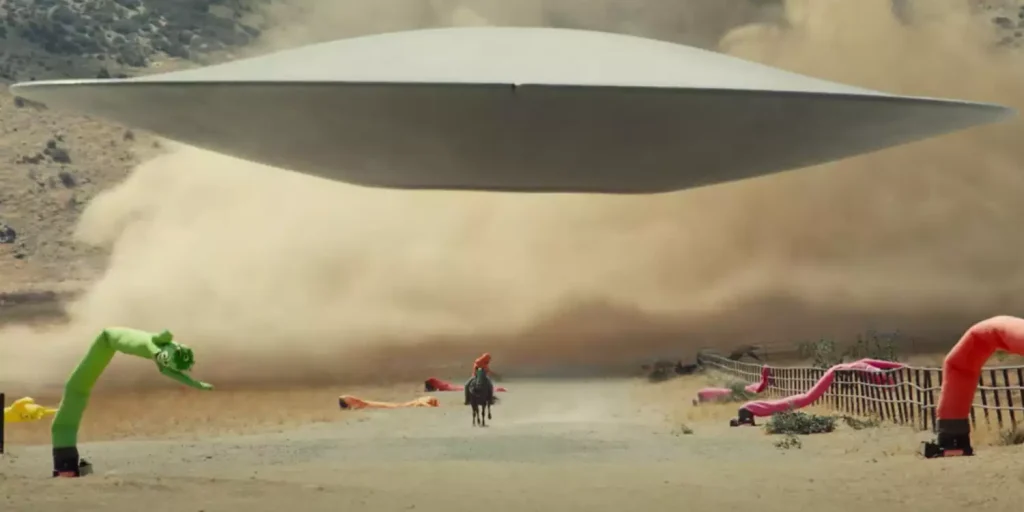
Briefly steering away from the visceral excess of horror beasts is a slightly more subtle take on extraterrestrial life that still manages to dedicate its screentime to amplifying the fear factor. Nope’s antagonist is known as ‘Jean Jacket’, a colossal UFO that takes on the shape of a biblically accurate angel with its expanding, curtained edges that flutter during its consumption and round off afterwards revealing a design that can only be described as a smoothed cowboy hat… Specific descriptions aside, what allows Jean Jacket a spot on this list is its omnipotent vibe that exemplifies mystery to harbour intense fears of the unknown and the uncanny. However, amidst all of Jean Jacket’s subtle ways, what would be a dishonour to not give credit is that scene involving Jean practically inhaling a sea of people, inducing intense feelings of brutal claustrophobia that is sure to stay with the viewer for long after watching.
5- The Long One – Slither (James Gunn, 2006)
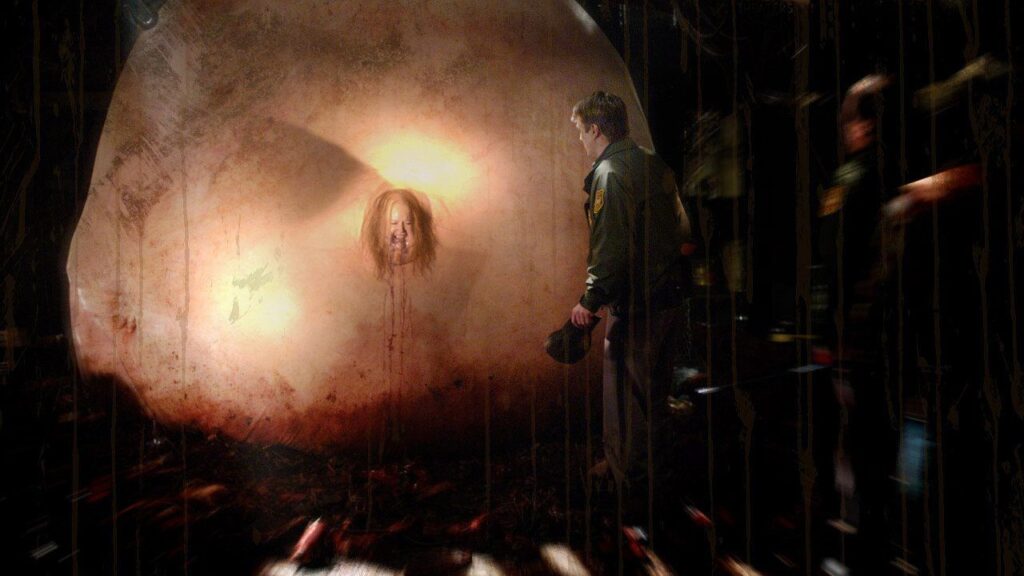
Known as The Long One is Slither’s force of destruction. The Long One’s parasitic origins are responsible for its multitude of transfigurations across the film. Director James Gunn inventively displays these evolutions in the most absurd yet gorily creative ways possible. For instance, one of the more memorable parasitic forms exhibited in the film is when the leech-like creatures inhabit the body of Brenda (Brenda James), making her body expand into a mammoth fleshy sphere complete with protruding veins and puddled in a pit of merlot-tinted rot that emphasises the abnormally stretched beyond belief skin.
6- Xenomorph – Alien (Ridley Scott, 1979)
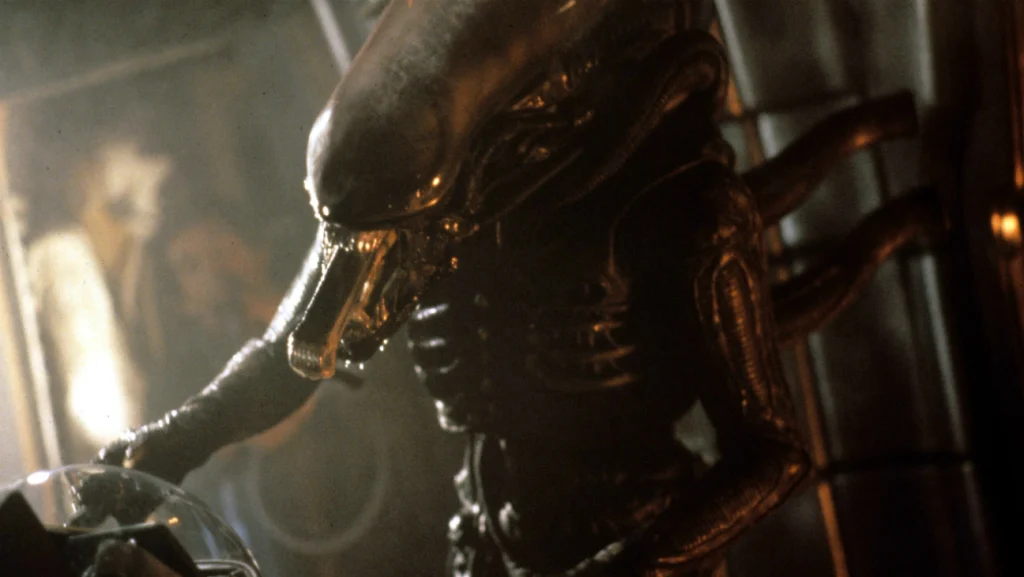
No extraterrestrial list would be complete without the undeniably infamous Alien. Ridley Scott’s 1979 tale on the powerful forces that exceed Earth is responsible for the one and only Xenomorph, an endoparasitoid species complete with a spiny tale, tubular skull and a hive mentality that makes for optimum domination over its prey. What makes the Xenomorph incredibly celebrated in the genre is its utter ruthlessness and its invasive potential. In the presence of Xenomorphs, no one is safe.
7- Shapeshifting parasites – The Faculty (Robert Rodriguez, 1998)
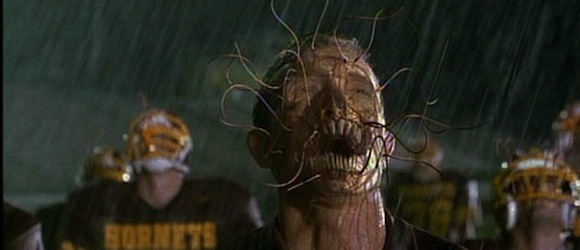
This late 1990s teen scream takes inspiration from the horror classic Invasion of the Body Snatchers (1956 [and its 1978 remake]) by placing the terror of the alien creature in its ability to shapeshift into a human, disguising and conniving before unleashing hell in its true form. Whilst The Faculty does an excellent job in the effects department when showing the creature in its full innate form, what remains the most foreboding aspect of the film is how these beasts transform into everyday people. It’s the fear of evil hiding where you’d least expect it, waiting and lurking in the shadows.
8- Death Angels – A Quiet Place (John Krasinski, 2018)
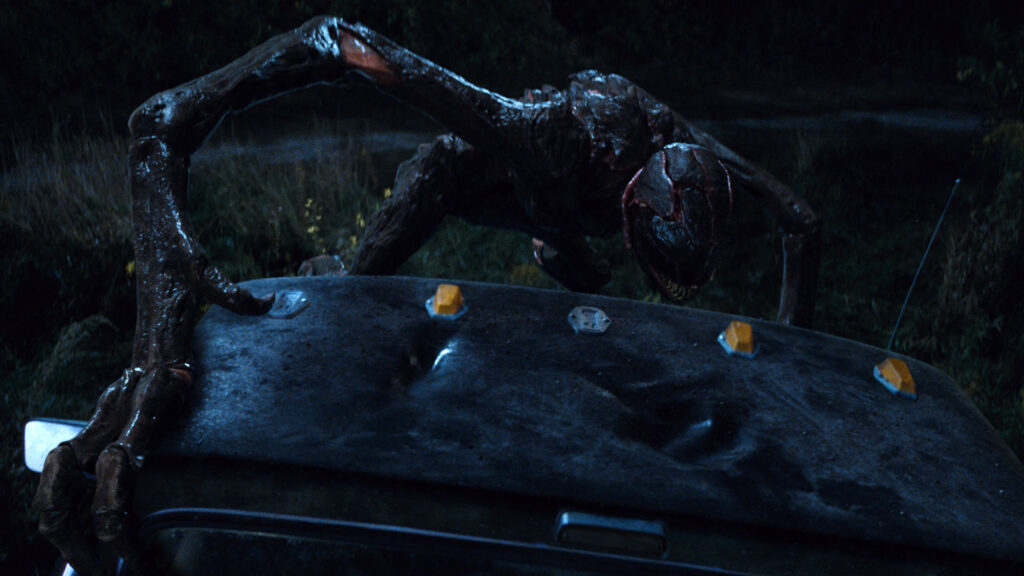
Hyper-evolved beings that possess the power of super hearing to the point that a loud breath is perceived as a scream is an utterly terrifying premise. These creatures, officially known in their world as ‘Death Angels’ are horror reincarnated, prepared to rip you into a million tiny pieces within seconds – as wickedly revealed during the film’s bitterly harsh opening sequence. These immense monsters are entirely blind, solely relying on their hearing to catch prey. And as discovered in the film’s sequel (A Quiet Place Part II [2020]), the Death Angels managed to achieve world domination – apocalypse style – within hours.
9- The ‘gorilla-wolf’ aliens – Attack the Block (Joe Cornish, 2011)
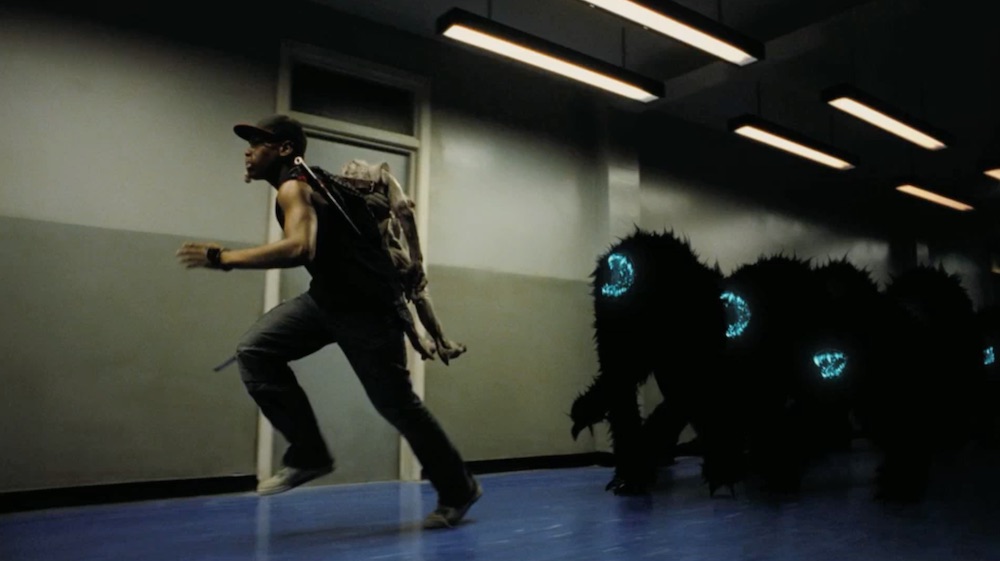
Described in the film as “big alien gorilla wolf motherf*****” are Attack the Block’s resident predators. This laugh-out-loud horror comedy may be equipped with a joke-a-minute coat, but underneath the humour are some pretty gruesome beasts that have the capability to instil enormous heaps of fright as the fuzzy, glowing creatures rapidly swarm down dark halls in their furry squads.
10- ‘PG’: Psycho Goreman – Psycho Goreman (Steven Kostanski, 2020)
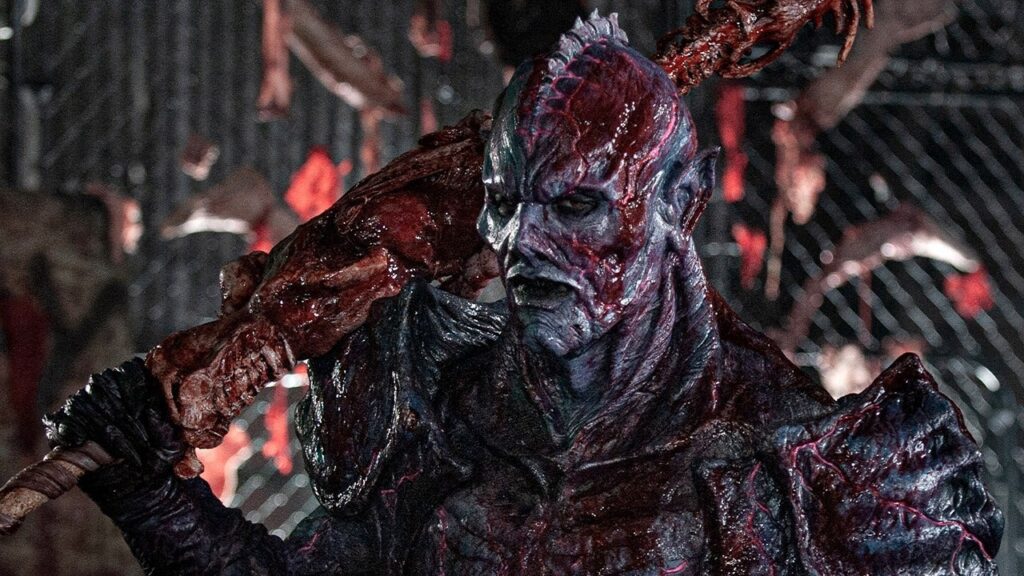
Psycho Goreman, also known as ‘PG’, is a self-proclaimed deadly, ferocious warrior who becomes trapped on planet Earth. PG’s death-lord ways see him destroy nearly everything in his path from murdering civilians to wrecking whole towns. However, PG does have an off-kilter charm that infuses the narrative and his persona with a warmth that can only be explained if one has seen the brilliantly wild and weird film itself. Throughout PG’s various rampages, his character becomes so emboldened with personality that it can be easy to overlook his barbarity. But one aspect that is impossible to escape is how exhaustively detailed the alien design is throughout the film. PG’s mottled skin with its constant crimson glow, coupled with a mountainous structure is a visual behemoth that both commands attention and adds to the horrifically majestical overarching tone of the entire film.
Want more top horror lists and reviews? Check out our blog here..

